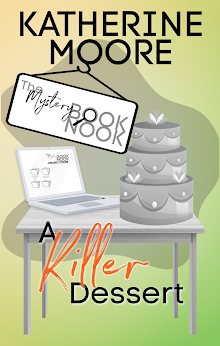When I pick up a book by an author I've not read before, I want to like the book. And if I like the book and it's part of a series, I will go and read the whole series, preferably one right after another. I don't like coming in on the middle, so I'll track down the books leading up to the books if necessary.
When I was in high school, I worked at the local library, which had a really good mystery section, even in the Large Print section. (And what a boon eReaders have been to people who need larger print. It always made me sad that unless you wanted to read
Reader's Digest and a small selection of best sellers, your large print options were limited.)
Somtimes the series went on so long that they started to get stale, but I kept with them. Here's a list--in no particular order--of mystery book series I devoured.
Laura Joh Rowland's
Sano Ichiro Mysteries--I love these books, set in Imperial Japan and they set off a lifelong fascination with the country and the history. The covers were gorgeous too.
I came to these books by way of the television series: Robert B. Parker
Spenser.
Ellis Peters'
Brother Cadfael--I liked the Cadfael books so much that when I ran out of them, I moved on to the books Peters wrote under her real name, which were historical fiction and not mysteries.
janet Evanovich's
Stephanie Plum (By the numbers) I hated the movie, but still think the books would make an awesome television series.
Robert Crais'
Elvis Cole novels --I love, love, love the Elvis Cole novels and now there are spin-offs for Joe Archer, one of the characters first introduced in the books
Nele Neuhau
s' Fairy Tale series--Set in Germany, there are only two books in the series so far, but they're great.
Ed McBain's
87th Precinct books--Forget
NYPD Blue, these were the procedurals for me.
William Marshall's
Yellowthread Street mysteries (which sparked my desire to go to Hong Kong)
M.C. Beaton's
Hamish Macbeth series (there's a fantastic TV series starring Robert Carlyle out there, with Danny Boyle writing and directing. I tried reading her "Agatha Raisin series but they were just too "twee" for me).
Catherine Aird's
Sloan and Crosby books
Anne Perry's
Thomas and Charlotte Pitt novels
And last but not least--Carolyn Keene's
Nancy Drew and Franklin Dixon's
Hardy Boys mysteries. They were the books that inspired my love of reading mysteries and I can still remember saving up my allowance to buy them.


































